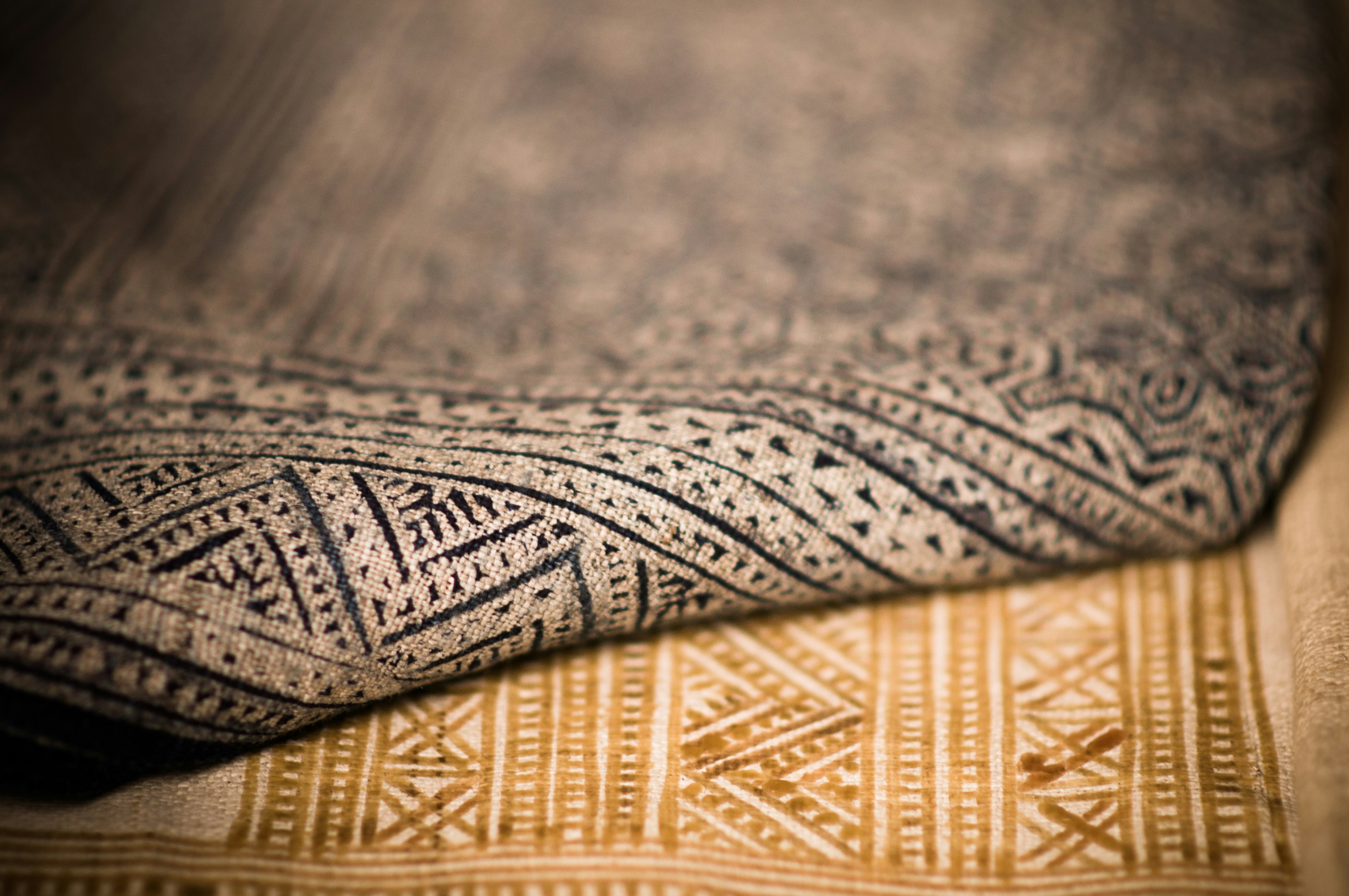For thousands of years, natural sources of pigmentation such as plants, clays, and insects have been used to give fabrics a variety of aesthetically pleasing hues. A virtual rainbow of textile colors was made possible by these natural dyes, from simple, single-source pigmentation to complex, multi-step dye combinations requiring highly specialized and closely guarded knowledge. However, after the first synthetic dye appeared in 1856, manmade pigmentation sources quickly overtook the textile market, allowing for greater color variety, increased color fastness, more economical production, and greater intensity of color. But despite the advantages of synthetic pigments, growing concerns regarding the toxicity, health effects, and environmental impact of artificial dyes have pushed some textile designers and manufacturers to turn to both time-honored and newfoundpigmentation processes.1 This resurgence of interest in natural dyes has spurred researchers to more closely examine natural dye formulations and dyeing processes using modern spectral technologies to help improve the performance of eco-friendly, low-impact dyes and compete with synthetically dyed products.

Image Source: Unsplash user Trang Nguyen
Objective Analysis of Natural Dyes
Although natural dyes have been in use since at least the Neolithic period, objective quantification of their color properties and performance within particular fabrics was not possible until recently. Today’s sophisticated spectrophotometric instruments allow researchers to analyze the impact of natural dyes on various fabrics to help textile manufacturers select the right dyes for their materials and purposes. For example, a 2009 study published in Materials examined the behavior of natural dyes sourced from peony, pomegranate, clove, coptis chinensis, and gallnut extracts in cotton, silk, and wool fabrics. CIE L*,a,*b* values determined via spectral analysis indicated that the final color result were “significantly dependent on the structure of the colorant and the kinds of fabrics.”2 More specifically, comparison of color values revealed that “wool showed the highest a* and b* values for all colorants, followed by silk and cotton, indicating that the increase of redness and yellowness was in the order of wool > silk > cotton.” Another group of researchers used colorimetric analysis to examine natural sources of yellow pigmentation and found that pomegranate peel dye produces lighter and truer yellow hues than weld in nylon fabrics.3 As research on natural dyes continues to progress in response to growing interest in environmentally-friendly textile processing, spectrophotometric analysis will allow for an expanded recognition of the color possibilities presented by dye/fabric interactions and aid in dye selection.
Evaluating the Impact of Mordants and Other Treatments
However, the dyes themselves are not the only factor to consider. Although some natural dyes such as indigo and lichens can be used alone, mordant treatment is often necessary to bind plant dyes to textile fibers and encourage color fastness. Because natural dyes tend to have significantly lower levels of color fastness than synthetic dyes, the mordanting process is considered a critical aspect to producing textiles that can be used commercially to compete with artificial pigments. However, mordants can change the physical and chemical properties of fabrics and interact with dyes in ways that affect color behavior. In many cases, this effect is for the better; as pointed out in the International Journal of Chemical, Molecular, Nuclear, Materials and Metallurgical Engineering, “Mordanting generally improve[s] dye performance and help[s] the dyer to achieve a broad spectrum of colors on a wide range of natural as well as synthetic fibers with expanded share ranges and better fastness properties.”4
The spectrum of color possibilities can be further expanded by subsequent chemical treatments such liquid ammonia applications that interact with dyes and mordants to create unique color variations. A study published in Coloration Technology found that mordanted wools dyed with a range of naturally-sourced red, brown, and yellow pigments, including madder, walnut, red onion, pomegranate, and weld, displayed lower *L values after ammonia treatment and that the decrease in *L values was proportionate to the potency of the ammonia solution.5 Other significant color value changes were also observed, including an increase of *C values in wools dyed with weld and white onion, a decrease in *C values in wools dyed with red onion skills and cochineal, and a decrease in a*, b*, and C* values in wools dyed with madder and walnut husks. Understanding the impact of mordants and other chemical treatments on naturally dyed fabrics can help you exploit the potential of these pigmentation processes to create the exact shade you are seeking.

Image Source: Flickr user AnnaKika
Mordant Selection
Mordants, while increasing color fastness, can also interfere with color levelness, or uniformity, making mordant choice a critical factor in the successful application of natural dyes. In a study published earlier this year, researchers used dual beam reflectance spectrophotometry to examine the impact of mordants on color levelness in silk fabrics dyed with mango, guava, and henna extracts.6 The spectral data revealed that samples not mordanted consistently had superior color levelness quality than mordanted samples. However, while all mordants resulted in inferior levelness, different mordants had different levels of impact color uniformity, with alum and alum-tin consistently resulting in better levelness than ferrous sulfate and ferrous sulfate tin/alum combinations. Objective analysis of how mordants affect the behavior of natural dyes in particular fabrics is vital to both selecting natural pigments and establishing processing methods that allow you to achieve your desired color results.
Expanding the Potential of Natural Dyes with Color Analysis
Spectrophotometric instrumentation allows for detailed, objective evaluation of natural dyes and dyeing processes to both expand and refine the use of natural pigments, giving textile manufacturers the information they need to successfully move away from synthetic dyes and embrace healthier, more environmentally friendly alternatives. HunterLab has been a pioneer in the field of spectrophotometric color measurement for over 60 years; our comprehensive range of spectrophotometers is sought out by researchers, chemists, and textile manufacturers alike to provide accurate and reliable color data that advances our understanding of dye formulation and dyeing processes. Whether you are looking to investigate the impact of natural pigments on fabrics in a laboratory environment, assess the relationship between natural dyes and mordant treatments, or monitor dyeing processes within a production line, we have the tools you need to perform precise and meaningful analysis of spectral information. Contact us to learn more about our innovative products, software packages, and world-class customer support services.
Reference: https://blog.hunterlab.com/blog/color-in-textiles/how-objective-color-analysis-is-helping-natural-dyes-flourish-in-textile-industry/?gclid=CjwKCAjwnef6BRAgEiwAgv8mQWv2-7z810NAy8Njm7fEanMZmxfxvcFOxmX2yDGQ9pD38wQzSHvnuhoCcbsQAvD_BwE

